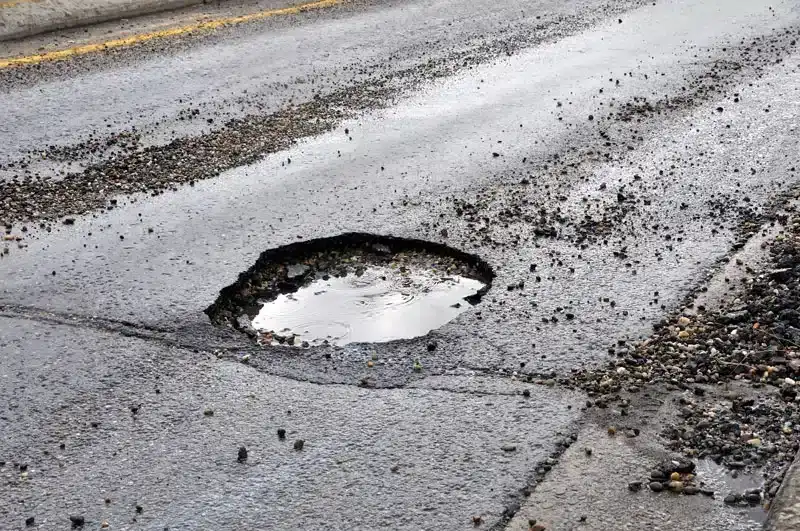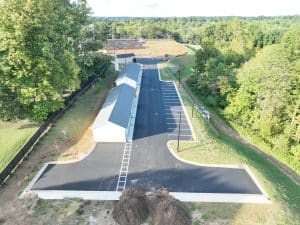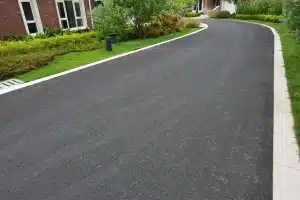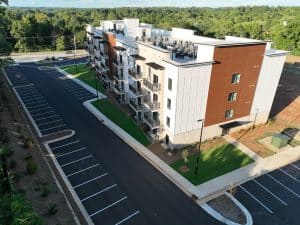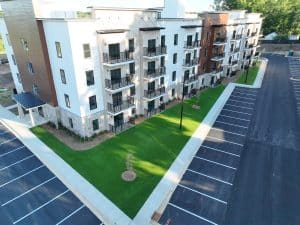The role of well-maintained roads within subdivisions isn’t just about functionality but also about impacting the desirability of a community. This article delves into the advantages of adequately paved roads in subdivisions. Beyond conveniences, we explore how these roads contribute to enhanced property values and residents’ safety, connectivity, and overall quality of life.
The connection between well-maintained roads and property values is more than skin-deep. Let’s look at how the condition of roads becomes a crucial factor in shaping a potential homeowner’s perception.
Appeal and First Impressions
Picture this: a potential buyer enters a subdivision with impeccably paved roads. The smooth, well-defined surfaces communicate a sense of order and care, leaving a positive impression. Beyond the functional aspects, the visual appeal contributes significantly to the overall feel of the community.
Landscaping Harmony
Well-paved roads often go hand in hand with thoughtful landscaping. Integrating green spaces and well-maintained roadside plant life further enhances the visual appeal, creating a balanced environment.
Architectural Appeal
The condition of the roads reflects the overall approach to community development. A commitment to well-maintained infrastructure often extends to the architectural coherence of the residences, reinforcing the idea of a well-managed community.
Long-Term Investment in Infrastructure
Homebuyers are not just investing in a property; they are investing in a lifestyle. Properly paved roads signal a proactive approach to maintenance, assuring homeowners that their investment will be supported by ongoing efforts to enhance the community.
Sustainable Practices
Communities that prioritize road maintenance often implement sustainable practices. This may include using eco-friendly materials, energy-efficient street lighting, and stormwater management systems. These elements contribute to a sustainable and eco-conscious community, pleasing modern homeowners.
Technological Integration
Innovations such as smart traffic management and sensor-equipped roads are becoming integral to urban planning.
Ease of Access and Community Engagement
The advantages of well-maintained roads extend beyond the purely visual. Functionality and ease of access are pivotal in creating a positive resident living experience.
Traffic Flow Optimization
Smoothly paved roads contribute to efficient traffic flow within the subdivision. This reduces commute times for residents and minimizes congestion, fostering a stress-free environment.
Community Events and Connectivity
Well-maintained roads are the conduits for community engagement. From neighborhood block parties to charity runs, these roads facilitate the seamless organization of events that strengthen the community’s social fabric.
Public Spaces and Recreation
Proximity to well-maintained roads often means accessibility to public spaces and recreational areas. Parks, playgrounds, and communal gathering spaces become integral parts of the community’s landscape, enhancing the overall appeal for families and individuals alike.
Safety First
The safety of residents is a non-negotiable aspect of community living. Well-maintained roads play a pivotal role in ensuring a secure living environment.
Pothole-Free Zones
Potholes and uneven surfaces are more than just nuisances; they are potential hazards. By investing in regular road maintenance, subdivisions minimize the risk of accidents caused by damaged road surfaces.
Regular Inspection Protocols
Routine inspections and maintenance schedules are a proactive approach to road safety. By identifying and addressing issues promptly, communities show a commitment to the well-being of their residents.
Emergency Services Accessibility
In times of crisis, time is important. Properly paved roads provide unimpeded access to emergency services, ensuring a rapid response to unforeseen situations.
Emergency Evacuation Plans
Developing and communicating clear emergency evacuation plans relies heavily on the accessibility of roadways. Well-maintained roads are integral to successfully implementing these plans, enhancing the community’s preparedness for unexpected events.
Pedestrian-Friendly Environments
Subdivisions are often home to families with children and individuals who enjoy outdoor activities. Well-maintained roads contribute to pedestrian safety, fostering an environment where residents can walk, jog, or cycle without unnecessary risks.
Crosswalks and Sidewalks
Thoughtful urban planning includes well-marked crosswalks and maintained sidewalks. These features enhance safety and encourage an active and healthy lifestyle among residents.
Speed Limit Enforcement
Properly paved roads provide a clear area for implementing and enforcing speed limits. This contributes to safer streets, especially in areas with vehicular and pedestrian traffic.
Investing in Community Prosperity
The importance of well-maintained roads in subdivisions is multi-faceted. Beyond the immediate benefits of enhanced property values, these roads form the backbone of a community’s identity. They are the channels for connectivity, safety, and a vibrant quality of life for residents.
As developers and homeowners recognize the advantages, the investment in maintaining high-quality roads becomes a practical necessity and a cornerstone of creating thriving, sought-after neighborhoods.

